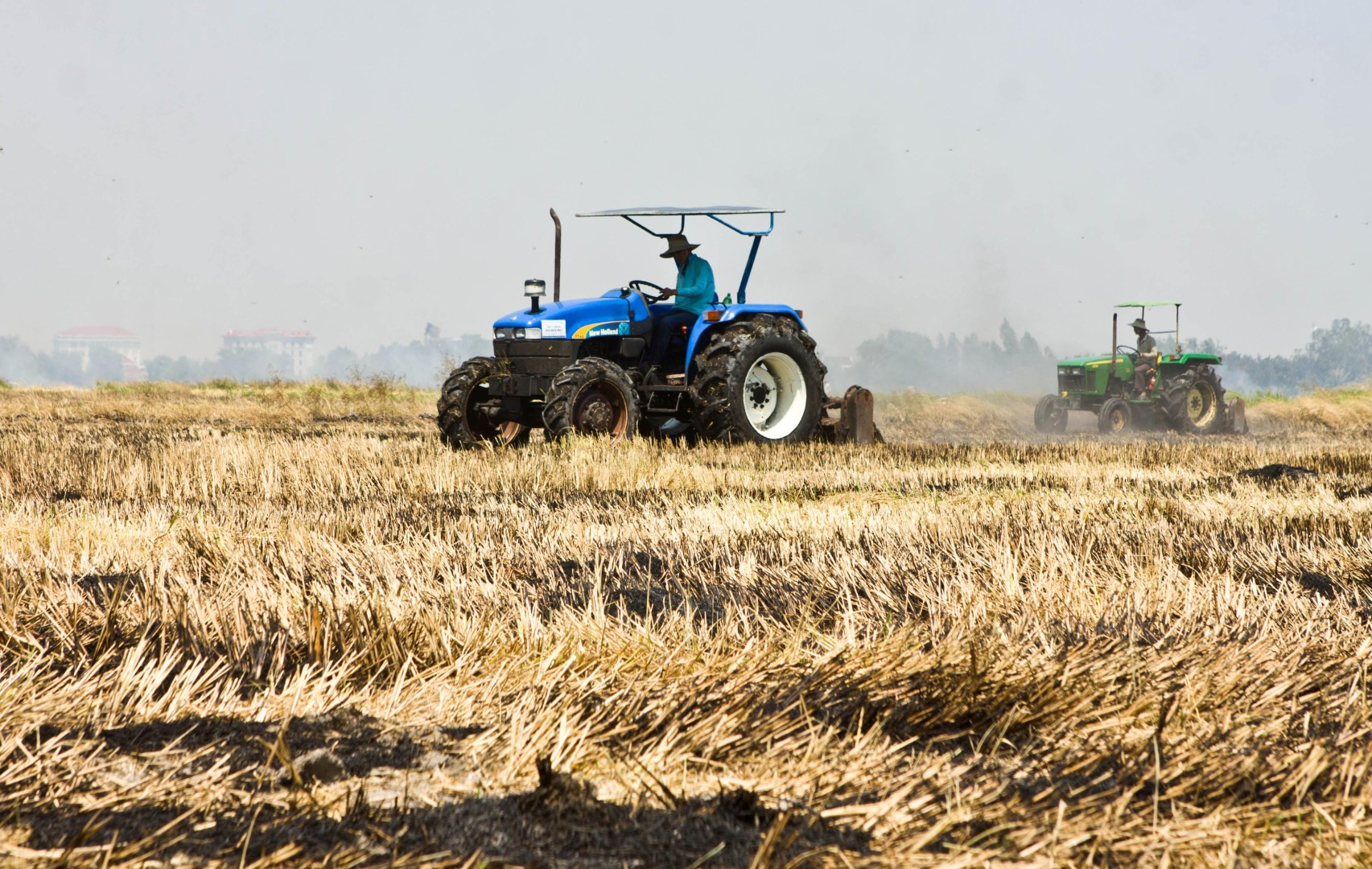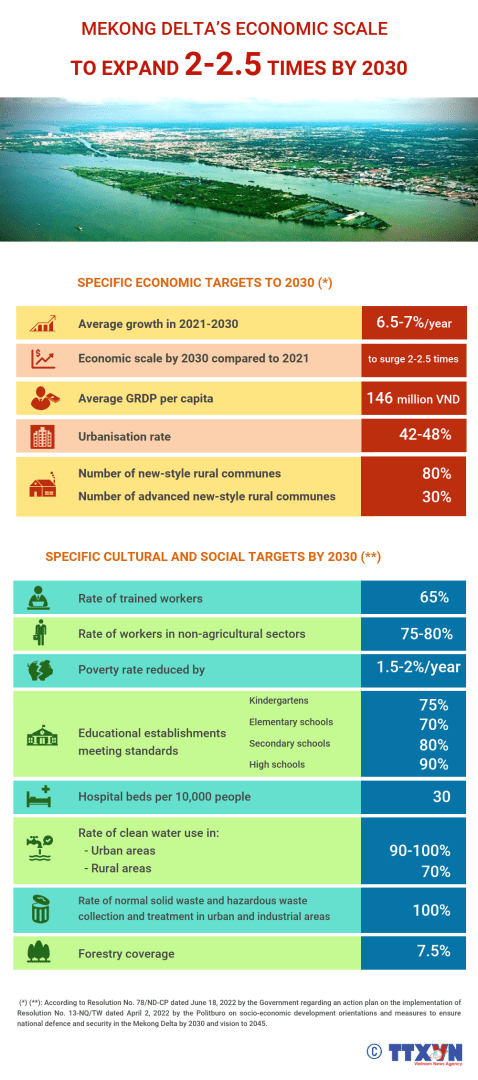
Various solutions are being taken to cope with its impacts, including the worsening drought and saltwater intrusion.
The Water Resources Institute (WRI) under the Ministry of Natural Resources and Environment estimated that losses caused by saltwater intrusion in this region stand at almost 70.17 trillion VND (2.7 billion USD) per year.
Meanwhile, clean water demand here will reach 2.5 – 2.7 million cu.m. per day by 2030 and 3 – 3.2 million cu.m. per day by 2040, the WRI said.
Nature-based response
In the Government’s Resolution No. 120/NQ-CP issued in 2017 on the sustainable development of the Mekong Delta that adapts to climate change, this region is divided into three zones.
The core zone of freshwater, located upstream, always has freshwater, even in extreme conditions, so the region has been prioritised for rice and fruit cultivation along with freshwater aquaculture.
The next is the brackish-water zone with alternate water regimes. Rice could be farmed here in the rainy season when freshwater is available. However, the local agricultural system needs to adapt to saline and brackish water in the dry season so as to turn these water conditions into opportunities, instead of an obsession like at present.
The third zone is coastal areas facing saltwater intrusion year-round. Farming systems that adapt to this condition need to be developed.

Forecasting techniques along with the construction of irrigation works and nature-based response plans have allowed better control of drought and saltwater intrusion.
Located downstream the Mekong River are brackish-water areas where many localities are experienced in navigating freshwater scarcity to sustain agricultural production. Therefore, what needs to be done is to use and promote timely crops and animals farmed here for generations to generate economic benefits as desired.





Le Van Tien, Head of the Division for Agriculture and Rural Development of Thanh Phu District in Ben Tre Province, said “sa sam” (Launaea sarmentosa) has become a good source of income for local residents amid periods of severe saltwater intrusion. The plant is both a vegetable and a herb species, so businesses have transferred production techniques to and purchased all the output from farmers in Thanh Phong and Thanh Hai communes.
An important measure for adapting to saltwater intrusion is to combine traditional and modern values of indigenous crops, including “sa sam”.
Dr. Nguyen Van Sanh, a Mekong Delta policy analyst
Boasting over-65km of coastline, Ben Tre province holds much potential for developing “sa sam”, which will help increase both the medicinal plant cultivation area as well as income for locals. The land can be farmed alternately with other crops and takes less labour and water to be cared for, said Dr. Nguyen Van Sanh, a Mekong Delta policy analyst.

Joint efforts required to weather dry season
The Mekong Delta, especially the eight coastal provinces, are frequently hit by drought and saltwater intrusion. Despite years of preparation, the region still suffered from drought and saltwater intrusion this year.
Conditions were even more serious than those believed to be at their record levels in 2016 and 2020, pushing many localities into numerous difficulties.





In the face of drought and saltwater intrusion predicted to linger on through May, Deputy Prime Minister Tran Hong Ha in early April held a teleconference with the affected localities to work out measures for ensuring water supply for people’s daily life and agriculture.

Nguyen Hong Khanh, Deputy Director of the Water Resources Department under the Ministry of Agriculture and Rural Development (MARD), said to deal with drought and saltwater intrusion this year, localities in the region have provided water containers for affected people, rotated public water supply, connected pumping stations with one another, expanded pipelines, drilled more wells, used saltwater filtration systems, and monitored salinity levels to appropriately operate water supply facilities.
At present, the number of affected households is much lower, equivalent to only about 50% compared to the 2019 – 2020 dry season, while the extent of impact is also less severe as locals have proactively equipped themselves with water containers and used water more efficiently. Anti-saltwater sluice gates in the Mekong Delta have also proved effective, helping ease damage to agriculture.



Drought and saltwater intrusion should be considered a characteristic of the Mekong Delta, and forecasting should be given more attention to ready response plans for daily activities and agricultural production. In addition, it is necessary to adapt crop and livestock structures to drought and saltwater intrusion while devising solutions and building facilities serving the restructuring.
Tran Ba Hoang, Director of the Southern Institute of Water Resources Research
Khanh noted that the MARD is drafting a masterplan on water security and dam and reservoir safety for the 2021 – 2030 period with a vision to 2050.

The ministry also recommended each household in the region build or equip itself with large water containers to collect and store rainwater for the dry season, which is a feasible and also an essential solution./. VNA